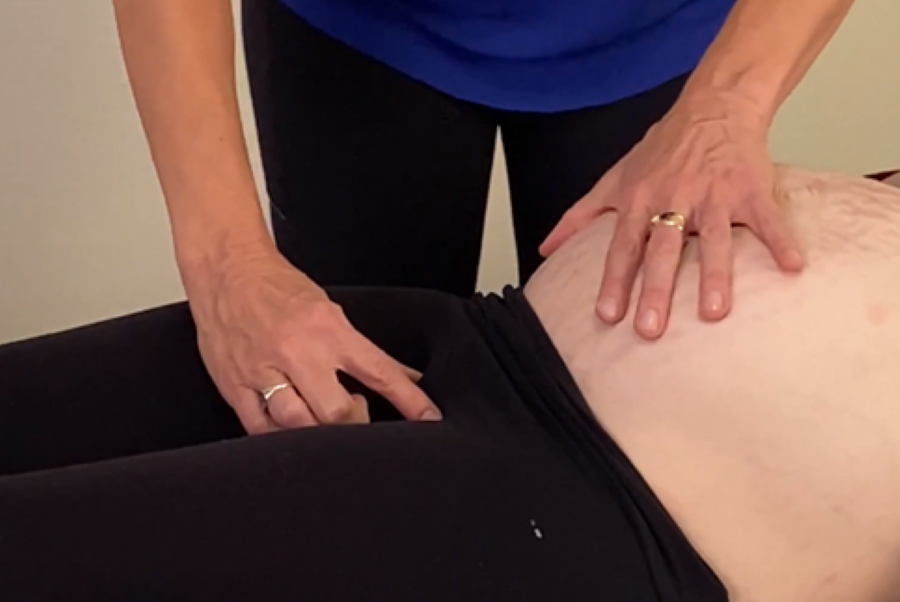POST SUMMIT SALE! NOW THRU MAY 5!
GET $100 OFF COURSES | $50 OFF SELECT SUMMITS
SAVINGS WILL SHOW IN CART
Improve Birth and postpartum Outcomes with techniques that prepare your client’s body for birth and support a healthier recovery

Midwives Course:
Facilitating Labor and Postpartum Recovery

Improve birth outcomes and help prepare your client’s body for a smoother birth and a faster recovery. Learn what to look for and what main areas to address to optimize the body’s function, so it can do what it was meant to do. Know what areas to work on after birth to support a healthier postpartum recovery.
Midwives and OB/GYN Practitioners
Recommended For
6.5 Hours
(No CEUs)
Course Length
Excellent Course for ALL Skill Levels
Course Level
No, not required.
–
Required for Certification
What Practitioners Say About Our Courses
Is This Course For You?
Ready to improve your clinical outcomes?
How Does The Online Course Work?
You will have immediate access to your course upon registration
There are downloadable lecture slides and a course workbook for note taking and in depth review
There are short quizzes throughout the course to ensure learning of key points
Your course includes easy to follow step-by-step instruction videos for all lectures and labs
Downloadable workbook includes photos and an overview of each technique for quick reference
You have lifetime access to your course creating a valuable reference video library
Course Unit Sneak Peak: Pelvic Diaphragm Release Lab
- Understand the 3 main areas of the body that need assessment prior to birth
- Understand how to release the lower abdominal fascia to help baby’s position in the belly
- Learn techniques to improve the uterine mobility prior to birth
- Understand the motions the pelvic bones go through for birth
- Learn how to impact the opening of the pelvic bones during birth
- Understand the pelvic floor muscles’ role in birth and how to effectively release them prior to birth
- Understand ways to help the abdominal muscles recover after birth
- Understand what can help close up the pelvic bones after birth
- Learn ways to help facilitate healing of the perineum and activate stronger pelvic floor muscle contraction after birth
| Module 1 | Introduction | |
|---|---|---|
| Unit 1 | Introduction Lecture 13:54 | |
| Unit 2 | Grounding Meditation 13:35 | |
| Module 2 | What Is Needed For Birth | |
| Unit 1 | What is Needed for Birth 16:10 | |
| Unit 2 | The Abdomen 21:20 | |
| Unit 3 | Lab 1: Lower Abdominal Fascial Release 3:50 | |
| Unit 4 | Lab 2 Uterine Mobility External | Uterine Mobility On A Pregnant Belly | |
| Unit 5 | Lab 3: Uterosacral Ligament Release On Pregnant Belly 2:02 | |
| Unit 6 | Lab 4: Pelvic Diaphragm Release 1:41 | |
| Unit 7 | Lab 5: Inversion With Abdominal Fascial Release 3:29 | |
| Module 3 | PELIVS AND PELVIC FLOOR MUSCLES | |
| Unit 1 | The Pelvic Floor Muscles 17:26 | |
| Unit 2 | The Pelvis | 34:14 | |
| Module 4 | OTHER RESTRICTIONS | |
| Unit 1 | Other Restrictions | 35:11 | |
| Unit 2 | Lab 6: Energy Flow 3:01 | |
| Unit 3 | Lab 7: Is Pelvis Still Birthing? | |
| Module 5 | PELVIC MOTIONS FOR BIRTH | |
| Unit 1 | Pelvic Motions For Birth | 25:07 | |
| Unit 2 | Lab 8: Hip Rotations During Labor| 3:13 | |
| Unit 3 | Lab 9: Pelvic Mobilizations To Open Pelvis During Labor | 3:06 | |
| Module 6 | Labor Considerations | |
| Unit 1 | Labor Considerations 7:33 | |
| Unit 2 | Positions During Labor | 1:48 | |
| Module 7 | POSTPARTUM CONSIDERATIONS | |
| Unit 1 | Postpartum Considerations 29:51 | |
| Unit 2 | Diastasis Recti Assessment | 3:20 | |
| Unit 3 | Lab 10: Oblique Stretch | 2:23 | |
| Unit 4 | Lab 11: Pelvic Floor Compression | 2:54 | |
| Unit 5 | Exercise to Close Pelvic Bones | |
| Unit 6 | Lab 12: Closing The Pelvis After Birth | 5:10 | |
| Module 8 | INTRAVAGINAL WORK | |
| Unit 1 | Postpartum Pelvic Floor Muscles and Tissues 48:37 | |
| Unit 2 | Lab 13 External Pelvic Floor Muscle Release 5:04 | |
| Unit 3 | Lab 14: Internal Assessment Entry 7:01 and Internal Assessment of Vaginal Tissues 8:42 | |
| Unit 4 | Lab 15: Internal Assessment of Pelvic Floor Muscles 8:01 | |
| Unit 5 | Lab 16: Assessing and Treating The Bladder Internally 8:25 | |
| Unit 6 | Lab 17: Mobilizing the Cervix | 6:51 | |
| Unit 7 | Lab 18: Pelvic Floor Muscles and Levator Ani Release 4:07 | |
| Unit 8 | Lab 19: Internal Coccygeus Muscle Release 1:57 | |
| Unit 9 | Lab 20: Perineal Body and Scar Tissue 2:25 | |
| Unit 10 | Lab 21: Anal Sphincter Muscle Release 9:26 | |
| Unit 11 | Lab 22: Kinestetic Awareness Of Pelvic Floor Muscles For Birthing 3:18 | |
| Unit 12 | Lab 23: Intravaginal Work Review 17:46 | |
| Module 9 | FURTHER SUPPORT | |
| Unit 1 | Further Support 7:12 |
Improve your clinical outcomes now
Have A Question?
Please email us with any questions and we will get back to you as soon as possible.